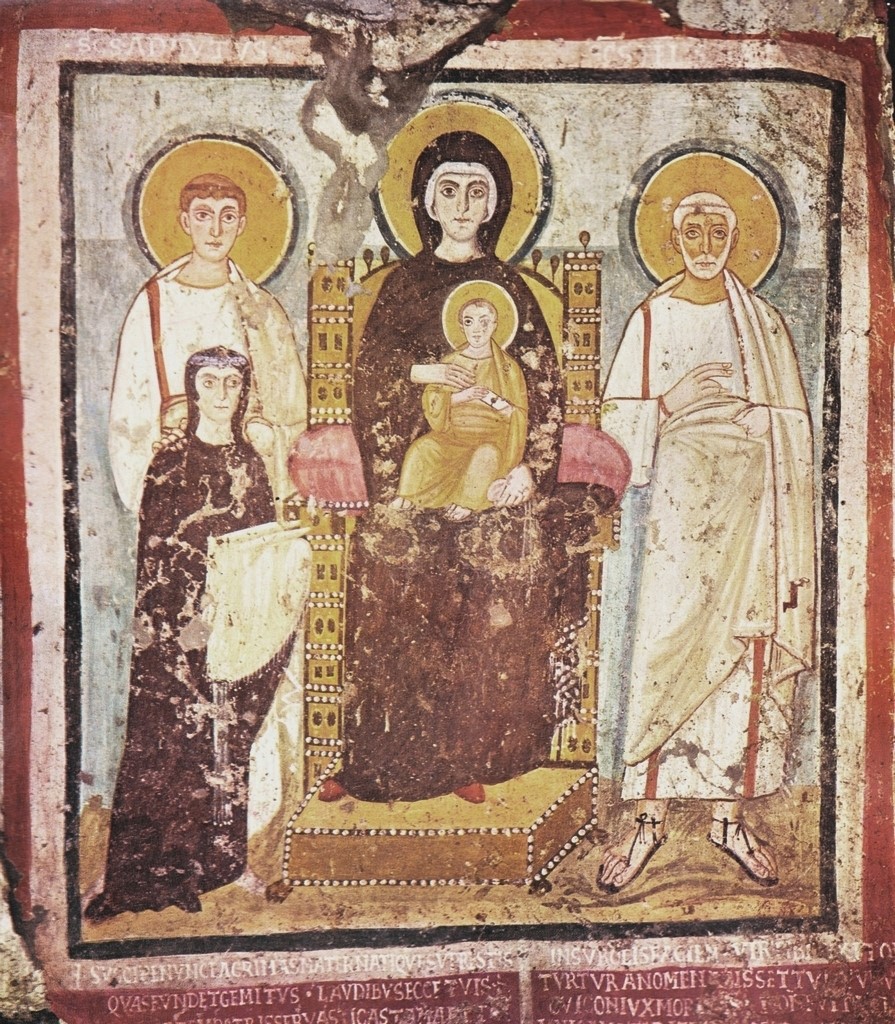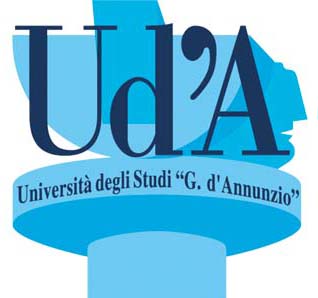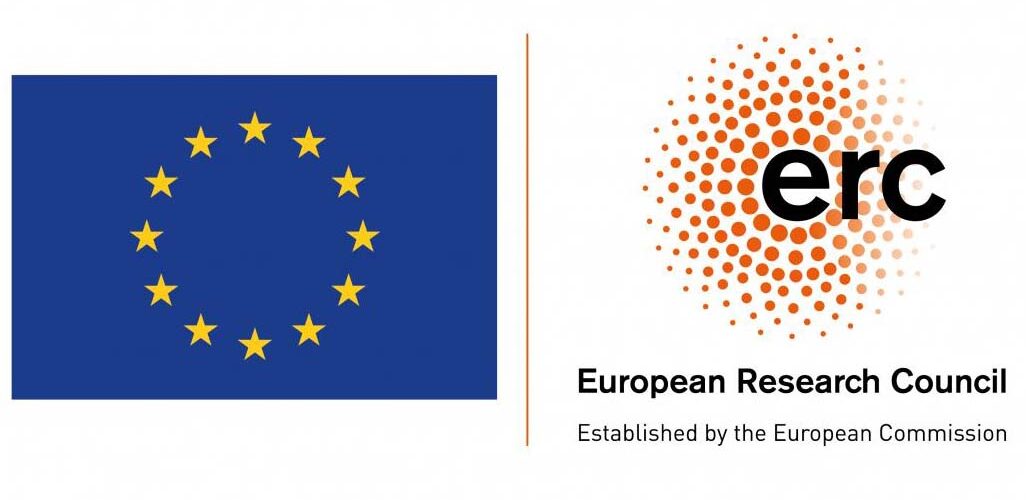In this course we will familiarize ourselves with a particular type of written texts commonly referred to as ‘graffiti’, focusing on those writings dating to the medieval and early modern periods (7th-16th c.). We will introduce the notion of graffiti and will analyse them in both their textual and material aspects, using some of the many graffiti that can be found in the city of Rome as a case-study to explore the relationship of both the content and material form of graffiti with the historical, cultural, and monumental context to which they belong.

Rome, Commodilla Catacombs. Madonna and Child between Saiints Felix and Adauctus and the donor Turtura. The above graffito is at about half height of the left side of the red frame
Coordination: Prof. Marco Mostert (Utrecht University)
Staff of teachers: Prof. Carlo Tedeschi (University “G. d’Annunzio” of Chieti-Pescara); Prof. Marco Mostert (Utrecht University); Prof. Antonio E. Felle (University of Bari); Prof. Véronique Plesch (Colby College, USA); Dr. Elisa Pallottini (University “G. d’Annunzio” of Chieti-Pescara).
Course language: English
Credits
The study load is the equivalent of 5 ECTS (140 hours). Each student should arrange with his/her home coordinator whether the course can be a part of the existing curriculum. After successful completion of the course the KNIR provides a certificate mentioning study load and evaluation.
Assessment and testing
The study load is based on:
a) Before the summer school: study of a syllabus prepared for the course and writing a short paper (approx. 1000 words): 2 ECTS (56 hours)
b) Active participation and transcription/edition of three graffiti found in situ: 2 ECTS (56 hours)
c) At the conclusion: finished version of the essay to be handed in to one of the teachers no later than four weeks after the finish of the course: 1 ECTS (28 hours)
Assessment takes place based on preparatory study of course material and writing of a short paper (20%), active participation and edition of three graffiti (30%), and writing a concluding essay (50%).
Target group and admission
The course is open to a maximum of 10 selected RMa/PhD students in classics, (art) history, general and comparative literature, heritage studies, cultural studies or related disciplines at MA, RMA or PhD level from KNIR partner universities (University of Amsterdam, Free University of Amsterdam, Utrecht University, University of Groningen, Radboud University, Leiden University).
Application and admission
The selection of (R)MA students is based on grades, the positioning of the course in the student’s curriculum, and a letter of motivation. The selection of PhD students is based on the letter of motivation and curriculum vitae. Students can apply via the link below; include in your application:
• a letter of motivation (max. 1 A4)
• a cv
• for (R)MA students: a recent list of courses followed and grades provided by your university
Facilities in Rome
All participants will be housed at the Royal Netherlands Institute in Rome’s Villa Borghese Park. From there, it is only a short walk to the historical center of Rome. The KNIR accommodation consists of shared bedrooms and bathrooms, and includes a living and dining space, a large kitchen, washing machine and wireless internet. All residents have 24/7 access to the library and gardens of the Royal Netherlands Institute.
Deadline
25 February 2024. Please note that the decision of the selection committee is final and no correspondence will be entered into.
More info
E-mail: secretary@knir.it
Phone: (+39)063269621
This course has been organized in collaboration with
@photo black/white: Ronciglione (VT), Church of St. Eusebius. Early Medieval devotional graffito, containing a prayer request to the reader.
@photo thumbnail: Rome, Commodilla Catacombs, Non | dice-| re il- |le se-| crita | abboce (9th century). The inscription is found on the left side of the frame of a 6th-century fresco representing the martyrs Felix and Adauctus. The graffito represents the earliest evidence of Italian vernacular.









